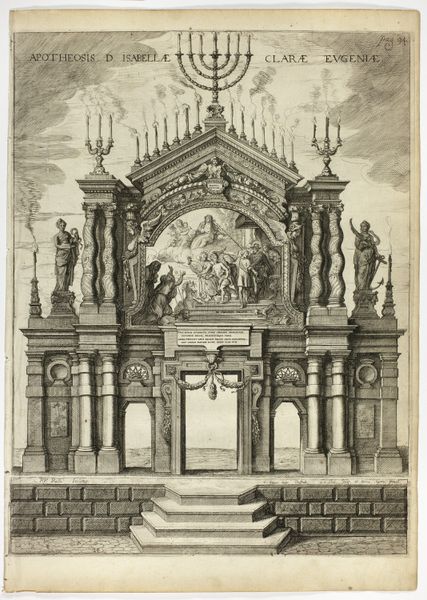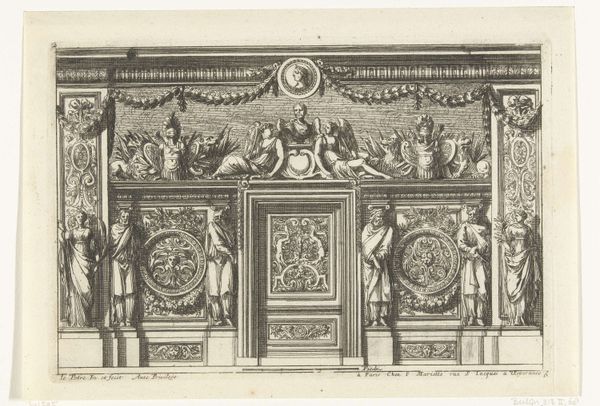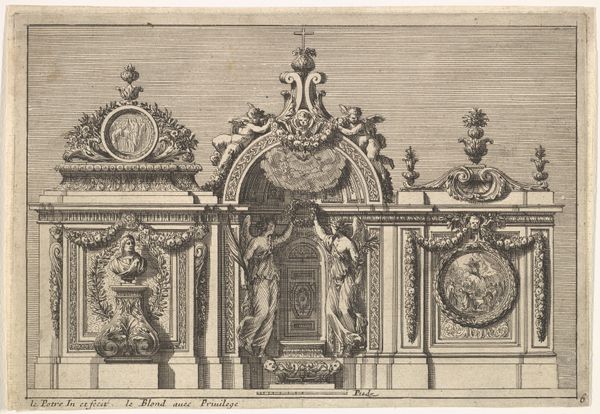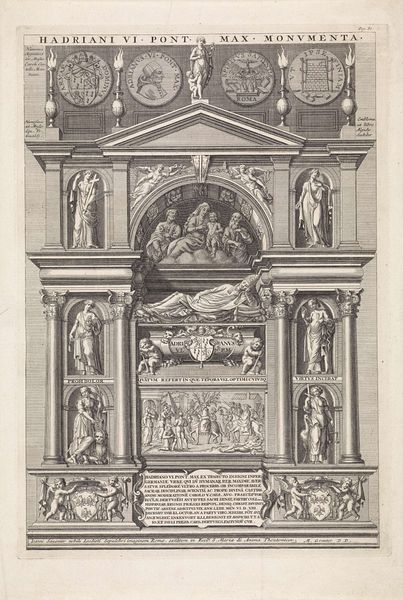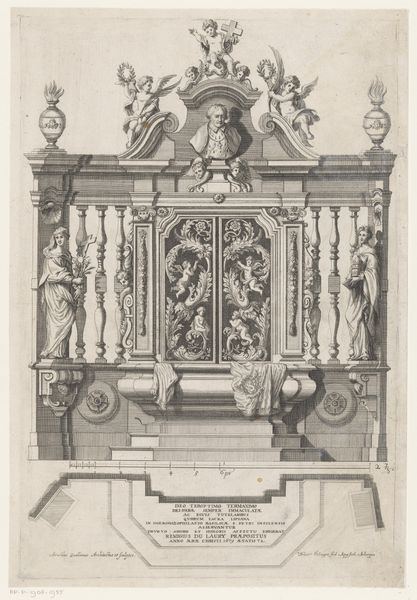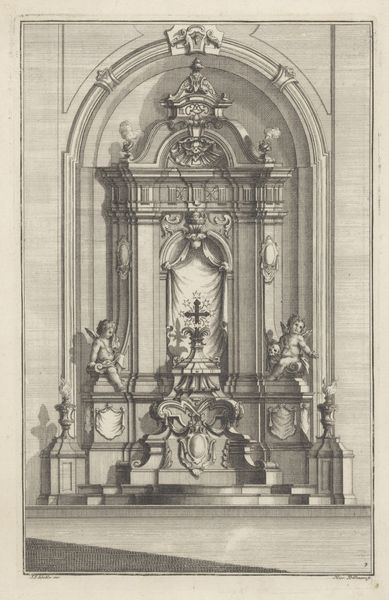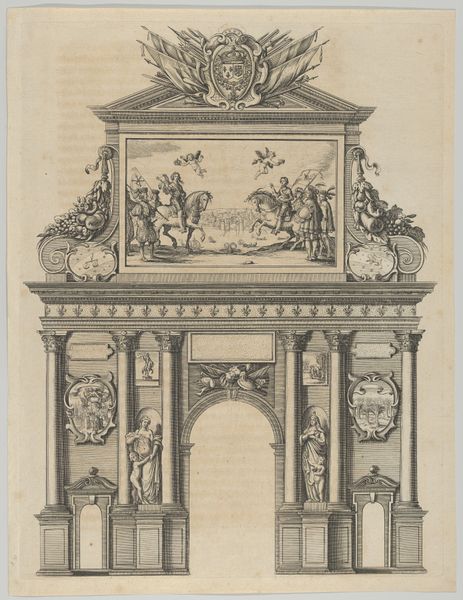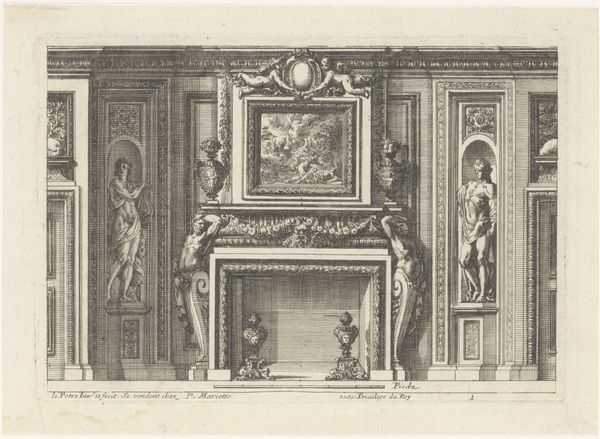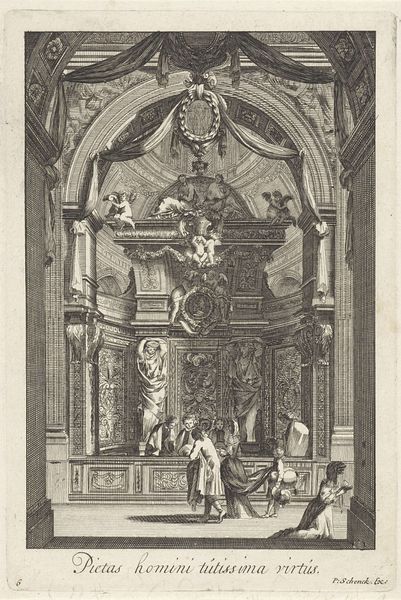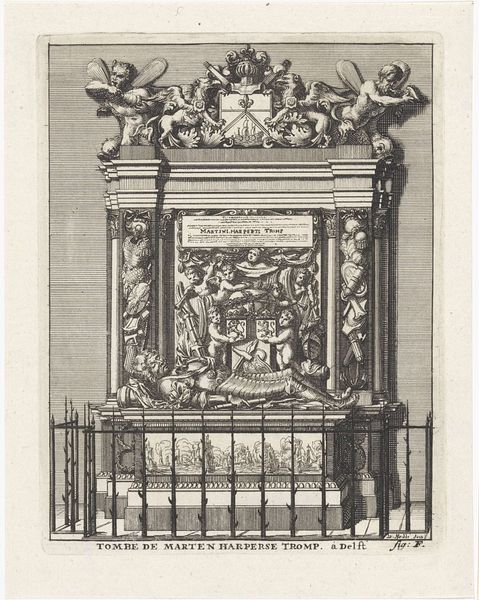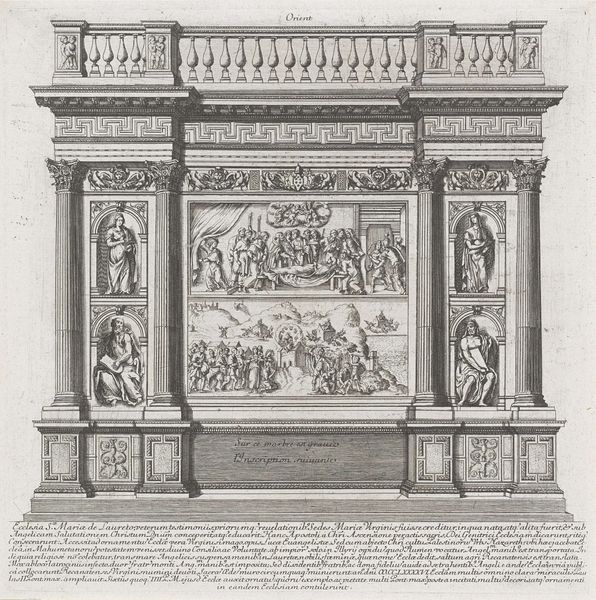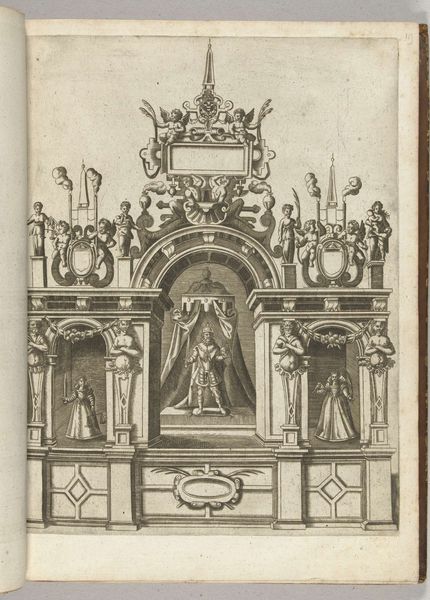
drawing, print, sculpture, engraving, architecture
#
drawing
#
comic strip
#
baroque
# print
#
presentation photography
#
architectural plan
#
classical-realism
#
perspective
#
sculpture
#
architectural drawing
#
architecture drawing
#
engraving
#
architecture
Dimensions: sheet: 21 3/4 x 25 15/16 in. (55.2 x 65.9 cm) mount: 30 x 40 in. (76.2 x 101.6 cm)
Copyright: Public Domain
Curator: At first glance, it’s almost dizzying! A riot of classical sculpture, crammed into a single space, meticulously rendered. What are we looking at exactly? Editor: This is "La Galerie de Girardon," an engraving, dating back to somewhere between 1700 and 1800, by Nicolas Chevalier. It gives us a glimpse into the sculpture gallery, or "cabinet," of the French sculptor François Girardon. And yes, it's now housed at the Metropolitan Museum of Art. Curator: A sculptor’s personal collection – like peering into their mind, seeing what they found inspiring, perhaps even challenging. It's so meticulously documented. The symmetry and the way the eye is drawn into the perspective is so intentional. Did everyone arrange their collections this formally? Editor: In the late 17th and 18th centuries, collecting was definitely a statement. Displaying antiquities – or even contemporary works imitating classical styles – signaled one's refinement, taste, and connections to a cultural lineage that stretched back to Greece and Rome. These weren't just haphazard gatherings; they were carefully curated assertions of power and prestige. Curator: Right. I wonder, did visitors understand the deeper social codes embedded in the way the gallery was organized? Or were they mostly struck by the sheer accumulation of beautiful things? I do wonder about Chevalier's rendering here... how accurate it is, how idealized. Editor: That's key. It’s likely more aspirational than a straightforward record. Engravings like this circulated widely, functioning almost as advertisements for Girardon's taste and, by extension, his skills as a sculptor capable of producing work that would fit so seamlessly within these aristocratic collections. This print participates in the mythmaking. And, in its two-dimensional, monochrome format, there's an leveling force at play, abstracting all the art objects within it from questions of, for example, racialized and gendered embodiment and/or class status that many of these original sculptures perform in three dimensions. Curator: So, in a way, this engraving becomes its own art object, participating in the construction of Girardon's identity and the very idea of the artist as a tastemaker. Amazing, like a sculpture gallery inception. Editor: Precisely! Curator: It really reframes my experience of viewing it. What seemed like a straightforward depiction is actually a complex layering of meaning. Thanks for that. Editor: Always a pleasure to pull back the curtain.
Comments
No comments
Be the first to comment and join the conversation on the ultimate creative platform.
